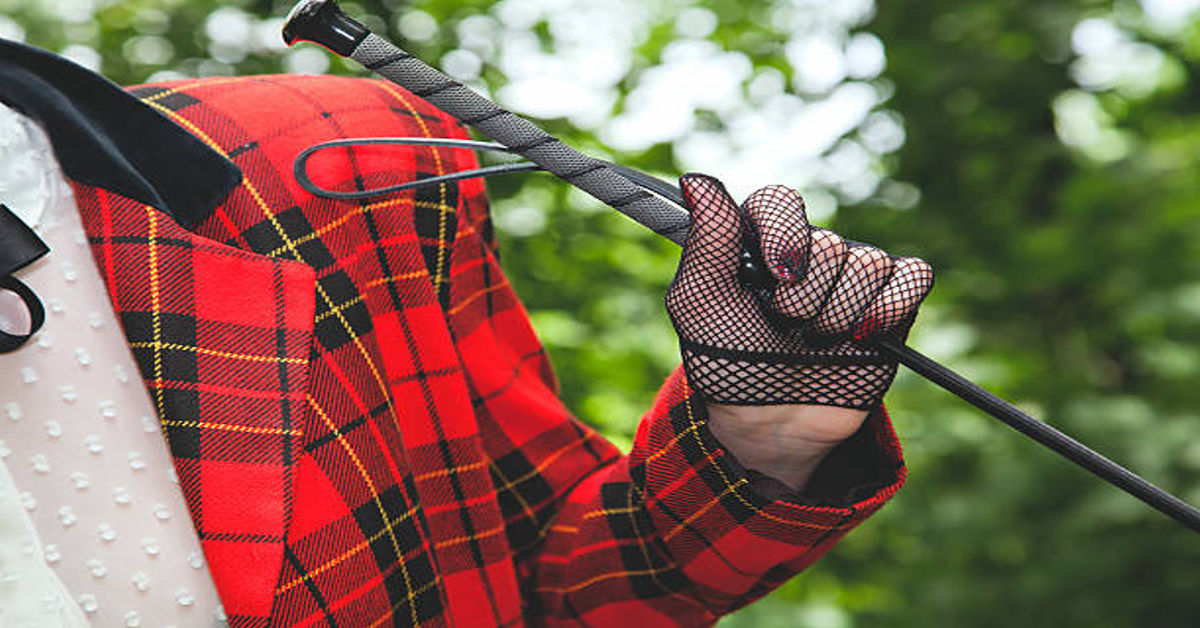Riding Crop: Guide to Its History, Purpose, and Modern Use
The riding crop is one of the most enduring and recognizable tools in the world of horseback riding. Though simple in design, it carries centuries of tradition, craftsmanship, and practical use. Often misunderstood as merely a whip, the riding crop serves as a communication instrument between rider and horse, emphasizing precision, respect, and balance rather than punishment.
Used across disciplines — from dressage to show jumping, racing, and leisure riding — the crop remains an essential part of equestrian culture. It is an extension of the rider’s arm, designed to reinforce commands, refine technique, and strengthen the bond of trust between human and horse.
In this comprehensive article, we will explore the origins, anatomy, types, functions, and ethical use of riding crops, along with their evolution from early horsemanship tools to modern equestrian aids. We will also look at safety considerations, maintenance practices, and the symbolic role of the crop in equestrian history.
1. Historical Origins of the Riding Crop
The concept of the riding crop dates back thousands of years, tracing its roots to the earliest domestication of horses. Ancient civilizations such as the Egyptians, Persians, and Greeks used simple tools made from leather straps or flexible branches to guide their horses during hunting, transportation, and battle. These early devices were precursors to modern crops and whips, though their purpose was more utilitarian than refined.
As horsemanship evolved, particularly in Europe during the Middle Ages, the relationship between rider and horse became more sophisticated. Horses were trained not just for work but also for sport and warfare. Nobles and knights required responsive mounts, and thus the riding crop became an important instrument in achieving obedience and precision.
By the 17th and 18th centuries, when equestrianism became both a sport and a form of art, the crop took on a new role — it became a symbol of elegance and control. It was crafted not only for function but also for aesthetics, often made with fine leather, braided handles, and decorative metal caps.
Throughout the 19th and 20th centuries, the crop evolved further, shaped by advancements in materials and by growing attention to animal welfare. Today, it represents not dominance but communication, emphasizing subtlety and understanding in the rider’s interaction with the horse.
2. The Purpose and Philosophy Behind the Riding Crop
At its core, the riding crop is not a weapon but a communication tool. It acts as an extension of the rider’s body, allowing for more refined cues and corrections. The main purpose is to reinforce the leg and voice commands — encouraging the horse to respond promptly without confusion or excessive pressure.
In equestrian philosophy, the crop should never replace skill, patience, or empathy. Instead, it complements them. A skilled rider uses the crop sparingly and thoughtfully, often only needing to carry it as a reminder for the horse to remain attentive. The horse quickly learns to associate its presence with focus and responsiveness.
In professional equestrian training, crops serve three key functions:
- Encouragement – A light tap can reinforce a command to move forward or increase speed.
- Correction – It helps redirect attention or discipline minor disobedience without aggression.
- Communication – The crop provides clear physical cues that align with leg and rein aids for precision in movements.
When used ethically, the crop becomes part of a silent dialogue between rider and horse, enhancing mutual trust and respect.
3. Anatomy and Structure of a Riding Crop
While the appearance of a riding crop may vary slightly depending on its use, the essential structure has remained consistent for centuries. The design combines flexibility, strength, and balance, allowing for quick, controlled motions that do not harm the horse.
| Component | Description | Purpose |
|---|---|---|
| Handle | Usually made of leather, rubber, or synthetic grip materials. | Provides control and comfort for the rider’s hand. |
| Shaft | Flexible central portion made from fiberglass, nylon, or carbon composite. | Offers strength with slight bend for precision. |
| Keeper (or Flap) | Small leather or synthetic tab at the end. | Delivers the tactile cue to the horse; spreads impact safely. |
| Wrist Loop | Strap attached to handle. | Prevents dropping and aids in control during movement. |
| Length | Typically 45–70 cm for riding crops. | Short enough for control, long enough for reach. |
The most crucial part is the keeper, as it distributes the contact evenly across the horse’s skin, ensuring that the crop’s cue is sharp but not painful. Quality crops are engineered for responsiveness, allowing the rider to use minimal effort for effective signaling.
4. Materials Used in Crafting a Riding Crop
The artistry behind a crop lies in its construction. Over centuries, materials have evolved from natural to synthetic while maintaining traditional craftsmanship standards.
| Material Type | Used For | Advantages | Limitations |
|---|---|---|---|
| Leather | Handle and keeper | Classic look, durable, flexible | Requires maintenance, expensive |
| Fiberglass | Shaft | Lightweight, sturdy, flexible | Can splinter if poorly made |
| Carbon Fiber | Shaft | Modern, ultra-light, strong | Costlier option |
| Nylon / Polyester | Braided cover | Weather-resistant, durable | May look less traditional |
| Rubber / Synthetic Grip | Handle | Provides comfort, non-slip surface | Less aesthetic than leather |
Today’s riding crops balance tradition with innovation. Some high-performance crops even integrate ergonomic grips or shock-absorbing shafts to enhance comfort for both horse and rider.
5. Types of Riding Crops and Their Applications
Though all crops serve similar functions, their designs vary depending on the discipline or riding style. Below is a table outlining the primary types:
| Type | Typical Length | Primary Use | Distinct Features |
|---|---|---|---|
| Standard Riding Crop | 45–60 cm | General riding and training | Compact, flexible shaft, leather keeper |
| Dressage Whip | 90–110 cm | Dressage and schooling | Longer length for subtle leg cue reinforcement |
| Jumping Crop | 50–70 cm | Show jumping and cross-country | Slightly shorter, thicker handle for control |
| Hunting Crop | 65–80 cm | Traditional fox hunting | Often includes a hook or thong for closing gates |
| Racing Whip | 40–50 cm | Horse racing | Foam-covered tip for safety and compliance |
| Schooling Crop | 50–70 cm | Training young or inexperienced horses | Balanced flexibility and responsiveness |
Each type of crop is designed for a specific discipline, ensuring the right level of control and communication. The shorter crops provide immediate response, while longer ones allow more nuanced direction during dressage.
6. How the Riding Crop is Used in Practice
Proper technique is essential to ensure the crop enhances communication rather than causes discomfort or fear. A trained rider uses it as an aid, not a punishment.
The basic principles include:
- Carrying position: The crop is held in the inside hand (relative to the direction of movement) with the handle resting against the thigh and the shaft angled backward.
- Application: A light, quick tap on the horse’s flank or shoulder — depending on the command — signals reinforcement of the rider’s leg cue.
- Timing: Immediate use after a command ensures the horse connects the cue with the desired action.
- Subtlety: A skilled rider’s goal is to use the crop less over time as the horse becomes more responsive to voice and leg aids.
In competitive sports, especially dressage and show jumping, precision and restraint are key. The rider must appear in harmony with the horse, using the crop invisibly yet effectively to maintain rhythm and communication.
7. Ethical Use and Animal Welfare Considerations
Modern equestrian ethics emphasize humane, respectful interaction between horse and rider. The crop should never be used as a tool of punishment or intimidation. Its use is strictly regulated by equestrian federations worldwide, including the FEI (Fédération Équestre Internationale) and national racing authorities.
Key ethical guidelines include:
- The crop should never leave marks or cause pain.
- It should be used only to reinforce a clear command, never out of frustration.
- Repeated striking or heavy use is strictly prohibited.
- Some competitions limit the number of times a crop can be used in a round (e.g., in horse racing).
In essence, responsible riders use the crop as a gentle nudge — a whisper, not a shout — to maintain communication and focus.
8. Riding Crop vs. Whip: Understanding the Difference
Though often used interchangeably in casual conversation, a riding crop and a whip are distinct tools.
| Feature | Riding Crop | Whip |
|---|---|---|
| Length | Short (45–70 cm) | Long (90–300 cm) |
| Flexibility | Firm, slightly flexible | Highly flexible |
| End Piece | Leather keeper | Lash or thong |
| Purpose | Reinforce commands in riding | Long-distance cueing (driving or lunging) |
| Common Use | English riding, jumping, racing | Training, groundwork, driving horses |
Whips are often used for groundwork, while crops are used for mounted activities. Both require skill and care to ensure ethical handling.
9. The Riding Crop in Various Equestrian Disciplines
Dressage
In dressage, the whip or long crop is used as an extension of the leg aid, helping refine lateral movements, transitions, and collection. It helps the horse understand subtle cues that promote precision and grace.
Show Jumping
A short jumping crop helps maintain forward momentum and focus. Riders use it lightly when the horse hesitates before a jump, encouraging confidence and energy.
Eventing
Eventing combines multiple disciplines, and the crop is used only when necessary — typically in the cross-country phase, to reinforce pace without aggression.
Racing
Modern racing crops are made with padded foam ends to protect the horse. Regulations strictly limit their use, ensuring they function as signals rather than forceful tools.
Trail Riding
For casual or long-distance riding, crops are used sparingly, primarily for steering or refocusing the horse when distracted.
10. Symbolism and Cultural Representation
Beyond function, the riding crop carries symbolic meaning. In the past, it represented authority and discipline among the aristocracy. Portraits of noble riders often depicted them holding crops as emblems of mastery, control, and refinement.
In modern times, it has come to symbolize elegance, confidence, and horsemanship. Within equestrian culture, the crop is an icon of precision and partnership — not domination. It embodies the delicate balance of leadership and empathy that defines great riders.
11. Safety and Handling Guidelines
Safety is essential when carrying a riding crop. Improper use can cause discomfort to the horse or unbalance the rider. The following practices help ensure responsible handling:
- Check equipment regularly: Ensure the shaft and keeper are not cracked or frayed.
- Avoid excessive swinging: Uncontrolled movement can startle the horse or accidentally strike other riders.
- Maintain steady grip: Hold the crop lightly but securely to prevent dropping it.
- Switching hands: Only experienced riders should switch hands mid-ride, as it can confuse the horse.
- Awareness: Always remain conscious of where the crop’s end is in relation to your horse and surroundings.
Proper handling demonstrates professionalism and ensures comfort for both horse and rider.
12. Care, Cleaning, and Maintenance
A well-made riding crop can last for years with proper care. Maintenance depends on materials used but follows general principles:
| Part | Care Method | Frequency |
|---|---|---|
| Leather Handle / Keeper | Wipe with damp cloth; condition with leather balm | Every few weeks |
| Synthetic Shaft | Clean with mild soap and water | As needed |
| Grip Area | Check for wear; replace if loose | Periodically |
| Storage | Keep flat or upright, away from heat | Always |
Never store a crop bent or folded, as this can weaken the shaft. If exposed to rain, it should be dried naturally — not near a heater — to preserve its integrity.
13. The Evolution of Crop Design
The modern riding crop reflects centuries of design refinement. Early crops were heavy, unbalanced, and sometimes harsh. Today’s versions emphasize ergonomics, safety, and control.
Key innovations include:
- Padded keepers to prevent injury.
- Shock-absorbing shafts for better handling.
- Lightweight composites that reduce strain.
- Non-slip grips for all-weather use.
- Custom lengths for various equestrian disciplines.
Manufacturers have also developed eco-friendly crops, using sustainable materials and synthetic leathers to appeal to environmentally conscious riders.
14. Gender and Style Influences
Throughout history, the riding crop has also been a fashion accessory — particularly in the 18th and 19th centuries, when equestrianism was a symbol of status. Ladies’ riding crops were often smaller and more ornate, featuring silver accents or carved handles.
Even today, many riders appreciate the craftsmanship behind their crop. A beautifully made crop complements formal equestrian attire, enhancing the aesthetic harmony between rider, horse, and gear.
15. The Psychology of Crop Use
Equine psychology plays a central role in understanding the crop’s purpose. Horses are highly sensitive animals capable of interpreting minute body signals. The crop’s light touch reinforces commands by engaging the horse’s tactile awareness, not pain.
The horse learns to associate the tap with specific instructions — such as moving forward, maintaining pace, or improving attention. Over time, a responsive horse may require no physical cue at all, responding instead to anticipation and tone of voice.
This subtle communication forms the essence of humane horsemanship: cooperation, not coercion.
16. Common Misconceptions About Riding Crops
There are several misconceptions regarding riding crops, especially among non-riders:
- They are not instruments of cruelty. When used correctly, crops never cause pain; they serve as gentle reminders.
- They are not necessary for punishment. Skilled riders rely more on body and leg aids.
- Crops do not replace training. They support, not substitute, proper riding skills.
- They are not outdated. Crops remain essential for precision even in modern sports.
- Shorter does not mean harsher. Crop effectiveness depends on control, not size.
Understanding these truths helps dispel the stigma and highlight the crop’s role in respectful horsemanship.
17. Regulations and Standards in Equestrian Sports
Most equestrian federations regulate crop design and use to ensure safety. For example:
- In FEI competitions, crops longer than 75 cm are not permitted in show jumping.
- In horse racing, crops must have padded tips and are limited in strike frequency.
- Pony clubs and junior events require lightweight, soft-ended crops to protect young riders and horses.
These rules reflect a global commitment to ethical riding practices and animal welfare.
18. Conclusion
The riding crop, though small in size, holds vast significance in the world of horsemanship. From its ancient origins as a simple tool to its modern refinement as a symbol of communication and trust, the crop embodies the art of subtlety in human-animal connection.
True mastery of the riding crop lies not in force, but in understanding — using it sparingly, precisely, and compassionately. It represents a bridge between rider and horse, built on respect, timing, and partnership.
As equestrian sports continue to evolve with technology and ethics, the crop remains timeless — a reminder that the finest communication often requires only the gentlest touch.
Frequently Asked Questions (FAQs)
1. What is the main purpose of a riding crop?
A riding crop reinforces the rider’s leg and voice aids, helping the horse respond more accurately without applying strong physical pressure.
2. Is using a riding crop cruel?
No. When used correctly, it is not meant to inflict pain. Instead, it provides light, controlled cues that aid communication and precision.
3. What is the ideal length for a riding crop?
Most general-purpose crops range from 45 to 70 cm, though longer versions are used in disciplines like dressage.
4. How should I care for my riding crop?
Keep it clean and dry, condition leather parts regularly, and store it flat or upright to maintain its shape and strength.
5. What is the difference between a whip and a riding crop?
A crop is shorter with a broad leather keeper, while a whip is longer, flexible, and used for groundwork or driving horses.







